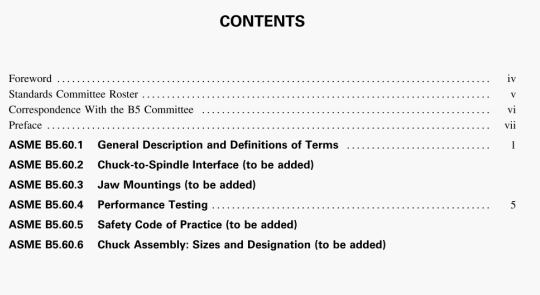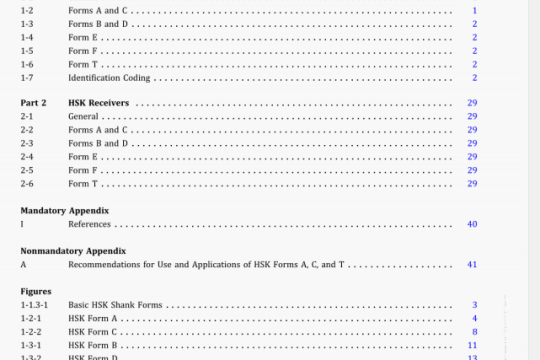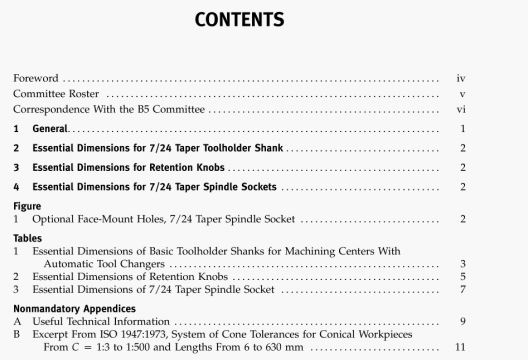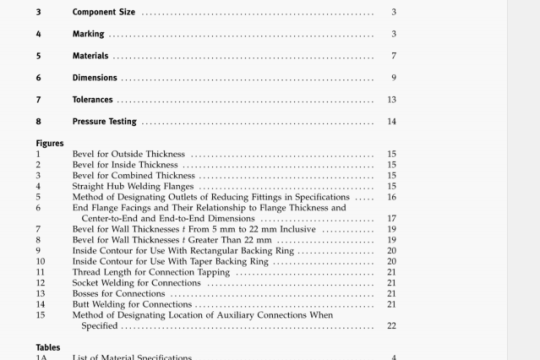ASME B16.1-2010 pdf download
ASME B16.1-2010 pdf download.Gray lron Pipe Flanges and Flanged Fittings Classes 25, 125, and 250.
3.2 Flanged Joints
A flanged joint is composed of independent interrelated components; the flanges, the gasket, and the bolting, that are assembled manually. Proper controls must be exercised in the selection and application for these elements to attain a joint that has acceptable leak tightness. Special techniques, such as controlled bolt tightening described in ASME PCC-1, may be used to achieve a tight joint in service.
3.3 Rating Temperature
Temperatures shown for the corresponding pressure rating shall be the material temperature of the pressureretaining structure. It may be assumed that the material temperature is the same as the fluid temperature. Use of a pressure rating at a material temperature other than that of the contained fluid is the responsibility of the user and subject to the requirements of any applicable code or regulation.
3.4 Low-Temperature Ratings
Pressure ratings for temperatures below —29°C (-20°F) should be determined in accordance with low- temperature pmpertics of gray iron (ASTM A 126) as governed by applicable code or regulation.
3.5 Ductility
Gray Iron has little ductility therefore, the resistance of these flanges and flanged fittings to excessive forces and suddenly applied loads is significantly less than for more ductile materials such as steel. The following precautions are recommended:
(a) These flanges and flanged fittings should not be used where suddenly applied loads such as rapid pressure fluctuation may occur.
(b) Alignment of flange faces is essential along with control of assembly bolt torque so as not to over-stwss the gray iron flanges. Care should also be exercised to ensure that piping loads transmitted to gray iron flanges arc controlled.
4 SIZE
4.1 Nominal Pipe Size
As applied in this Standard, the use of the phrase “nominal pipe size” or the designation NI’S followed by a dimensionless number is for the purpose of Identifying the end connection of piping, flanges, or flanged fittings. The number is not necessarily the same as the flange or flanged fitting inside diameter.
4.2 Reducing Fittings
Reducing fittings shall be designated by NI’S for the openings in the sequence as indicated in the sketches of Fig. 1.
7.2 Fadng
(a) Classes 25 and 125 gray iron flanges and flanged fittings shall be flat faced (I.e., without pro)ection or raised face) and finished in accordance with MSS SP-6.
(b) Class 250 flanges and flanged fittings shall have a 2 mm (0.06 in.) raised face of the diameters given in Table 2 and finished In accordance with MSS SP-& The raised face is included in the minimum flange thickness and center-to-face dimension.
73 Center-to-Face Dimensions
7.3.1 Side Outlet FIttings. Side outlet elbows, side outlet tees, and side outlet crosses shall have all openings on intersecting centerlines. Long-radius elbows with side outlet shall have the side outlet on the radial centerline of the elbow.
7.3.2 Elbows
(a) ilie center-to-face dimensions for straight-size 90-dcg elbows, 90-deg long-radius elbows, 45-deg elbows, side-outlet 90-deg elbows, and double-branch elbows are shown in Tables 3, 4, and 5.
(b) Reducing 90-deg elbows, reducing 90-deg long- radius elbows, reducing side-outlet 90-deg elbows, and reducing double-branch elbows shall have the same center-to-face dimensions as straight-me fittings shown in Tables 3, 4. and 5 corresponding to the size of the largest opening.
(c) For 90-deg long-radius elbows with side outlet, the center-to-face dimensions of the side outlet shall be the same as dimension A in Tables 3, 4, and 5 for a straight-size 90-deg elbow corresponding to the size of the largest opening.
(d) Special-degree elbows ranging from I deg to 45 deg, inclusive, shall have the same center-to-face dimensions as those for 45-deg elbows; those over 45 deg and up to 90 deg. inclusive, shall have the same center- to-face dimensions as those for 90-deg elbows. The angle designation of an elbow is the angle between the flange faces.
73.3 Tees, Crosses, and Laterals
(a) The center-to-face dimensions for straight-size tees and crosses, with or without side outlet, and laterals are shown in Tables 3, 4, and 5.
(b) Reducing tees and reducing crosses, with or without side outlet, and reducing laterals. NPS 16 and smaller, shall have the same center-to-face dimensions as straight-size fithngs shown in Tables 3.4, and 5 corresponding to the size of the largest opening. For M’S 18 and larger, if the outlet of a reducing tee; the branch of a reducing lateral.




